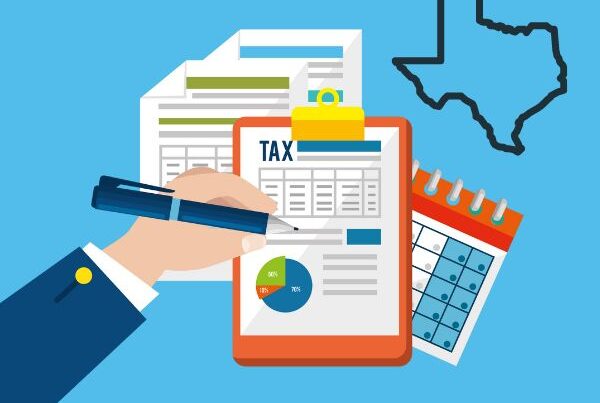Estimated reading time: 5 minutes, 20 seconds
As a small business owner, you’re likely concerned about keeping your cash safe and secure. One way to achieve this is by ensuring that your deposits are insured by the Federal Deposit Insurance Corporation (FDIC). The challenge here is the FDIC insurance limit and how to maximize it.
FDIC Insurance Limit
In case of a bank failure, the FDIC provides insurance coverage to depositors in the United States. The standard insurance amount is $250,000 per depositor, per insured bank, for each account ownership category (see the FDIC for details). However, this is often insufficient for small businesses.
Ways to Increase the FDIC Insurance Limit
Small businesses with larger deposit amounts may need to consider ways to increase their coverage beyond the standard amount. Here are some ways to do it:
- Multiple Banks
- Ownership Categories
- CDARS and ICS
Multiple Banks
One way to increase your FDIC insurance coverage is by opening accounts at multiple FDIC-insured banks. This way, you can spread your deposits across multiple banks, increasing your total coverage. For instance, if you have $500,000 to deposit, you can open accounts at two different banks, with each account having $250,000 in deposits. This ensures you’re fully insured for the entire amount.
One challenge of spreading deposits across multiple banks is the movement of funds. Many banks will have free built-in tools for Automated Clearing House (ACH) or electronic funds transfer (EFT) as part of their checking and\or saving accounts. There are also many fintech tools like Bill.com that make funds transfers easy for banks that don’t have built-in EFT capabilities. Typically, ACH will take 1-5 days, depending on the tool.
Another challenge of multiple banks is that $250,000 may be too low for many business transactions. It’s not uncommon for certain purchases or payrolls to exceed this limit. For this reason, businesses should explore additional ways to maximize their FDIC insurance.
Ownership Categories
The FDIC insured limit is $250,000 for corporations (S, LLC, C), partnerships, or unincorporated associations which is defined as an association of two or more persons formed for some religious, educational, charitable, social or other non-commercial purpose. Read this FDIC document on CORPORATION, PARTNERSHIP AND UNINCORPORATED ASSOCIATION ACCOUNTS for detail.
If you are operating your business outside of these structures, another way to increase your coverage is by using different account ownership categories. The FDIC insures deposits based on account ownership categories, including individual accounts, joint accounts, retirement accounts, and business accounts. By using different ownership categories, you can increase your coverage. For example, if you have a small business with three owners, you could open a joint account with $750,000 in deposits. This would be fully insured under the FDIC rules.
Adding additional owners on accounts makes sense when there are multiple owners in a business. This might be the best approach period as it will automatically increase the FDIC limit.
What doesn’t make sense is to add individuals on an account who are not owners or principles in a business due to the risk of their manipulating funds. Any owner on an account will have the ability to move funds, so everyone on an account should have trust with each other to ensure that funds are used appropriately.
This technique is not going to be useful except for very small businesses as most will want a formal corporate or partnership structure to operate under.
CDARS and ICS
Another option for small businesses is to use services like Certificate of Deposit Account Registry Service (CDARS) and Insured Cash Sweep (ICS). CDARS allows depositors to access multi-million-dollar FDIC insurance coverage by spreading their funds across a network of banks. Similarly, ICS enables depositors to access insurance coverage on demand deposit accounts (DDAs), which aren’t typically covered by FDIC insurance. With ICS, depositors can place funds in one account and have those funds automatically distributed across a network of banks in amounts above the FDIC insurance limit of $250,000. This allows them to receive insurance coverage on the full amount of their deposit. The actual amount depends on the bank, but often can result in millions of dollars of protected funds.
What is CDARS?
CDARS is designed for depositors who want to invest their funds in certificates of deposit (CDs), which typically offer higher interest rates than traditional savings accounts. When a depositor invests in a CD through CDARS, the CD is broken into smaller amounts and placed in CDs at multiple banks within the CDARS network. The depositor receives one consolidated statement and one interest rate, making it easier to manage their investment.
What is ICS?
In contrast, ICS, which stands for Insured Cash Sweep, is designed for depositors who want to maintain liquidity and access to their funds while still receiving FDIC insurance coverage. ICS enables depositors to access insurance coverage on demand deposit accounts (DDAs), which are not typically covered by FDIC insurance. DDAs are checking accounts that allow depositors to make unlimited deposits and withdrawals, making them ideal for businesses that need to access their funds regularly.
When a depositor places funds into an ICS account, the funds are automatically distributed across a network of banks in amounts below the FDIC insurance limit of $250,000. This allows depositors to receive insurance coverage on the full amount of their deposit, while maintaining liquidity and access to their funds. ICS also provides same-day access to funds, making it easy for depositors to manage their cash flow.
CDARS and ICS products are facilitated by IntraFi who works with a network of banks. Check here to see if your bank works with the IntraFi network. If they do, reach out to them to find out what products they have that can leverage this approach.
Are Big Banks Safer?
The demise of Silicon Valley Bank and Signature Bank in March 2023 were a reminder of banking risk. Silicon Valley Bank was the 16th largest bank in the United States before collapsing and represented a large systemic risk. The response from the US Federal government was protection of all depositors for those two banks and not just protection of the FDIC limits. With this response and the actions of the US Federal government in the banking crisis of 2008 has come the concept of a SIB, or systemically important bank.
A SIB is a bank that is so large that a collapse of such a bank has systemic challenges to the rest of the financial system. There is no defined set of banks, but we know for 2008 and 2023 that the larger the bank, the more likely there will be interventions. It could be easy to consider deposits at one of these larger banks to be safer than a small regional bank. Here is a list of the 15 largest banks in the US at the end of 2022.
However, here are challenges in spreading money across the largest banks:
- Poor customer service
- Not small business friendly with their lending and other programs
- Lots of fees
- Low interest rates
There is also the concern that the financial system is at greater risk if everyone concentrates all deposits in a few banks. After all, many of the mortgage issues of 2008 came from these larger institutions.
A wise approach may be some deposits in larger banks, with others in smaller institutions that provide different benefits.
Combined Approach
The best approach for a small business to maximize the FDIC insurance limit is applying all the above methods, as each has advantages.
Multiple banks are a good idea for a few reasons. First, different banks can provide different benefits, such as better interest rates or better tools. Second, if a bank fails, there can still be a gap in access to funds while the FDIC unwinds it. Even a few days without access to funds can be problematic for many businesses.
Incorporate a SIB as second bank if you believe in the too-big-to-fail concept. It’s not fool proof, but not crazy either.
Multiple ownership categories are a no-brainer in most cases. Simply mirroring business ownership into bank accounts bumps up the insured limits and gives all-access to the funds. This is critical should one of the owners be gone, disabled, or in the worst-case, die. If you don’t trust all owners having access to funds, you may need to rethink who you are partnering with in your business.
Finally, CDARS and ICS are nice products to layer onto a bank.
Increased FDIC Insurance Limit
The FDIC insurance limit hasn’t always been $250,000. The initial limit was $2,500 in 1934 and was $100,000 until it was raised in 2008 in the wake of the financial crisis (see a History of FDIC Insurance Limits for a timeline).
There is discussion in Congress about raising the limit (see After Bank Failures, Critics Argue FDIC Limit of $250,000 Is Not High Enough). The underlying concern is the challenge for businesses small and large staying under the limit. This is a valid concern and the likelihood that the limit increases at some point is 100%. It’s just a matter of when and how much.
In the meantime, use one or more of the strategies here is protect your business today.
Conclusion
In conclusion, the FDIC insurance limit is an essential factor to consider when deciding how to protect your small business funds. There are various ways for small businesses to increase their FDIC insurance coverage and keep their funds safe and secure.
For other blogs on bank accounts for small businesses, read:





